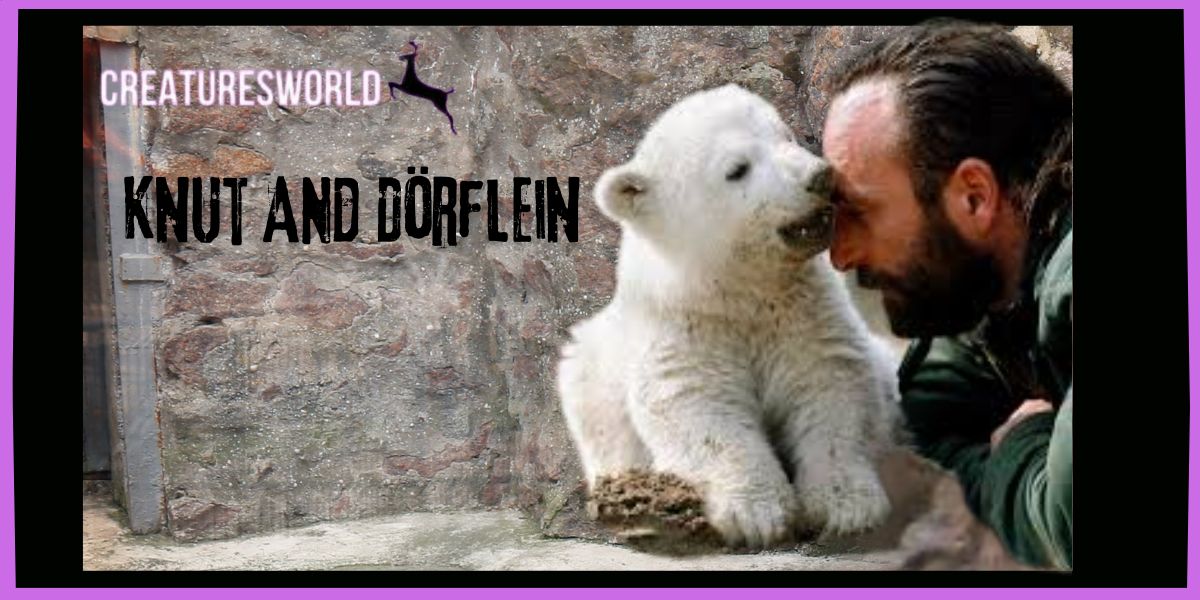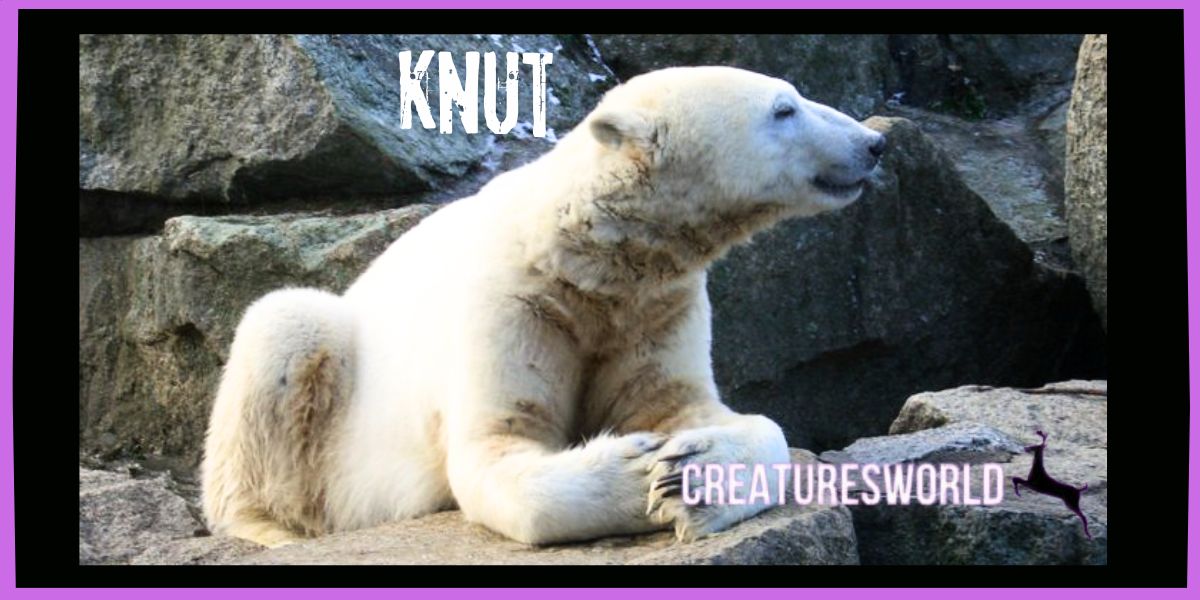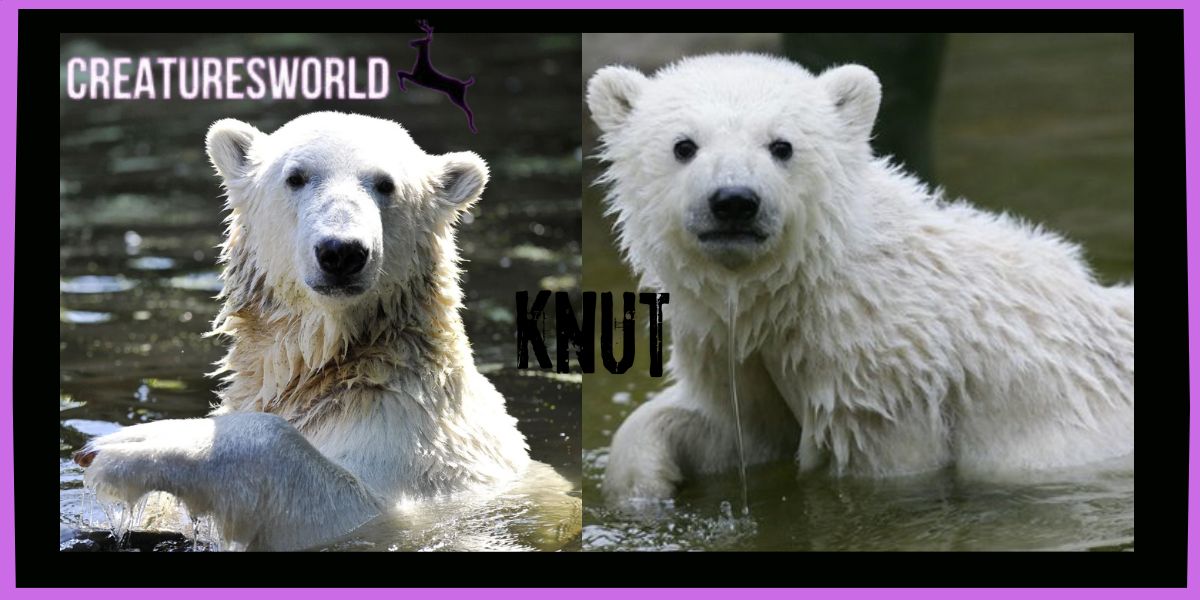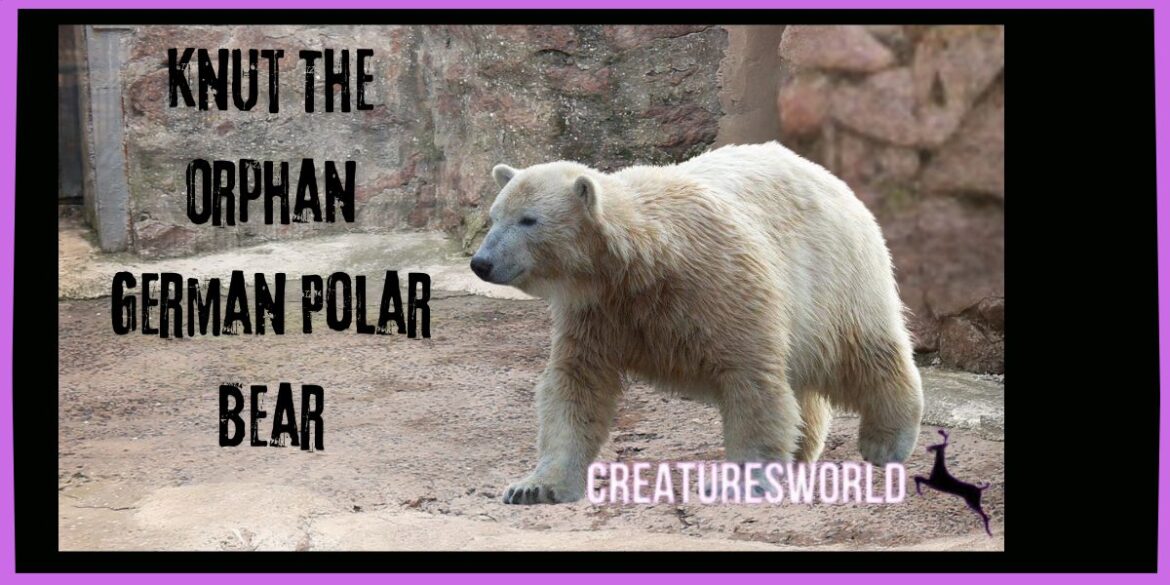Today we are going to talk about Knut The Orphan German Polar Bear, was born at the Berlin Zoological Garden and raised by zookeepers after being rejected by his mother at birth. This made him the first polar bear cub to survive past infancy at the Berlin Zoo in over three decades.
Knut The Orphan German Polar Bear Family
Knut’s mother, Tosca, a 20-year-old former circus performer from East Germany born in Canada, and his father, Lars, a 13-year-old from the Tierpark Hellabrunn in Munich, gave birth to Knut and his unnamed brother on December 5, 2006, following an uncomplicated pregnancy.

For reasons unknown, Tosca abandoned her cubs on a rock in the polar bear enclosure. Zookeepers intervened, rescuing the cubs using an extended fishing net. Unfortunately, Knut’s brother succumbed to an infection four days later. Knut, however, became the first polar bear in over three decades to be born and survive at the Berlin Zoo. Initially the size of a guinea pig, Knut spent his first 44 days in an incubator before being raised by zookeeper Thomas Dörflein.
Knut required constant care, which meant that Dörflein had to sleep on a mattress beside Knut’s sleeping crate at night and engage in daily activities such as playing with, bathing, and feeding the cub. Initially, Knut’s diet consisted of a bottle of baby formula mixed with cod liver oil every two hours. At four months old, his diet was upgraded to include milk porridge mixed with cat food and vitamins.
Dörflein was also present during Knut’s twice-daily one-hour public shows, resulting in numerous photos and videos of the two together. Dörflein gained minor celebrity status in Germany and was awarded Berlin’s Medal of Merit for his dedicated care of Knut. Sadly, Dörflein passed away from a heart attack on September 22, 2008, at the age of 44.
Knut The Orphan German Polar Bear Zoo Legal Problems
In early March 2007, the German tabloid Bild-Zeitung published a statement from animal rights activist Frank Albrecht, who argued that Knut should have been euthanized rather than being raised by humans, claiming the zoo was violating animal protection laws. Wolfram Graf-Rudolf, director of the Aachen Zoo, supported Albrecht’s view, suggesting that the zookeepers should have allowed Knut to die after being rejected by his mother, as the bear would suffer emotional distress each time it was separated from its caretaker.
In response, children protested at the zoo with signs saying “Knut Must Live” and “We Love Knut,” while others sent numerous emails and letters pleading for his life. Albrecht also received threatening letters. The Berlin Zoo stood firm in its decision to care for Knut, rejecting the notion that euthanasia would be a kinder option.
Albrecht clarified that his goal was to highlight legal issues, not to have Knut euthanized. Previously, in December 2006, he had unsuccessfully sued to prevent Leipzig Zoo from euthanizing a rejected sloth bear cub, arguing that human intervention violated natural law. He noted the parallels between the cases. The resulting publicity significantly raised Knut’s profile from national to international.
Knut The Orphan German Polar BearFirst Time In Public
On March 23, 2007, Knut was introduced to the public, drawing 400 journalists to the Berlin Zoo for “Knut Day.” His global fame led to various rumors about his health. For example, on April 16, 2007, he was taken off display due to teething pain, but initial reports incorrectly claimed he had an unknown illness. On April 18, the zoo received a death threat against Knut, prompting increased police security. The threat passed without incident.
Knut The Orphan German Polar Bear People Pleaser
Despite Der Spiegel reporting on April 30, 2007, that Knut was “steadily getting less cute” as he grew older, he continued to attract record crowds to the zoo throughout the summer. By July 2007, at seven months old and weighing 50 kg (110 lb), Knut’s twice-daily public appearances were canceled to ensure his keeper’s safety.
Zoo spokeswoman Regine Damm mentioned that it was time for Knut to “associate with other bears and not with people.” Initially sharing an enclosure with Ernst, a Malaysian black bear cub, and its mother, Knut was eventually moved to his own space. Although visitor numbers dropped from their peak in March and April, Knut remained a major attraction, with the zoo recording 400,000 visitors in August 2007, an all-time high.
Knut The Orphan German Polar Bear Center Of Attention
Knut continued to be an international news subject in late 2007. His restricted diet, aimed at controlling the natural weight gain needed for surviving harsh winters, attracted attention beyond Germany. His daily meals were reduced from four to three, and his favorite treats, like croissants, were limited.
In September, Knut injured his foot, prompting worldwide concern. By November, weighing over 90 kg (198 lb), he was considered too risky for close handling. His first birthday celebration was broadcast live on German television, and commemorative coins were minted.
Originally intended for breeding, Knut’s role shifted. With the birth of Flocke in December, dubbed “Mrs. Knut” by Bild, speculation arose about their potential pairing.
Read About Dire Wolves Raised In Captivity
A year after his public debut, Knut weighed over 130 kg (286 lb), prompting the installation of a six-inch glass plate between him and zoo visitors for safety. By the end of March 2008, Markus Röbke, one of Knut’s caretakers, suggested that Knut should leave the zoo to adjust to life alone.

Röbke noted Knut’s longing for his former caretaker, Thomas Dörflein, and his reliance on attention, even crying when alone. “Knut needs an audience,” Röbke stated, emphasizing the need for change.
In April, the Berlin Zoo faced criticism for allowing Knut to hunt and eat carp from his enclosure’s moat. Despite protests, the zoo defended Knut’s behaviour as natural.
Knut The Orphan German Polar Bear With Other Polar Bears
Until his death, Knut shared his enclosure with three female polar bears: Nancy, Katjuscha, and his mother, Tosca. Reports in late 2010 suggested aggression from the older bears towards Knut, leading to speculation about bullying. However, one zookeeper disagreed, stating that Knut was still learning to assert himself as an adult male. On March 19, 2011, at the age of four, Knut collapsed and died in his enclosure.
Witnesses observed him experiencing convulsions before falling into the pool. The necropsy revealed significant brain changes as a potential cause of death. Animal welfare groups initially blamed the Berlin Zoo for negligence, alleging stress from sharing the enclosure with the female bears. The zoo refuted these claims, emphasising their care for Knut and the importance of his socialisation with other bears for his well-being.
Knut The Orphan German Polar Bear In 2008
In July 2008, the Neumünster Zoo sued for a share of Knut’s profits, claiming ownership rights. Berlin Zoo contested this, sparking a legal dispute. Despite talks of relocation due to his size, Berlin officials and the zoo expressed their desire to keep Knut in the capital.
Knut The Orphan German Polar Bear In 2009
Disputes between the Berlin and Neumünster Zoos persisted into 2009. On May 19, Berlin Zoo offered to purchase Knut from Neumünster to resolve the financial dispute. Neumünster initially demanded €700,000, but Berlin Zoo negotiated and ultimately agreed to pay €430,000 to retain Knut.
In September 2009, Giovanna, a female polar bear close in age to Knut, arrived in Berlin from Munich’s Hellabrunn Animal Garden. Although temporarily sharing Knut’s enclosure, their introduction sparked speculation about potential mating, despite their sexual immaturity.
In March 2010, PETA called for Knut’s castration to prevent inbreeding concerns, as he and Giovanna shared a grandfather. The Berlin Zoo declined to comment, stating Giovanna’s stay was temporary. Eventually, in August 2010, Giovanna returned to Munich after repairs to her enclosure were completed.
Knut The Orphan German Polar Bear Death
On April 1st, pathology experts confirmed that Knut’s cause of death was drowning, with the apparent seizure attributed to encephalitis, a brain swelling likely triggered by an infection, though the specific virus remains unknown. Despite lacking apparent symptoms, the infection may have been present for weeks or months before Knut’s death.
His sudden passing prompted an international wave of mourning, with hundreds of fans visiting the zoo to pay their respects. Berlin’s mayor, Klaus Wowereit, expressed the city’s deep affection for Knut, referring to him as the star of the Berlin zoos.

Knut The Orphan German Polar Bear Finally Solved By The Scientists
In January 2014, the Leibniz Institute for Zoo and Wildlife Research published Knut’s full autopsy results, revealing severe brain damage that would have proved fatal even if he hadn’t drowned. The autopsy suggested that Knut was suffering from encephalitis caused by a virus, marking the most extensive post-mortem examination ever conducted on an animal.
Everything I ( I, Kabir Thakur) have written here is thought out and well research processed Information. Please comment me for your doubts and to correct me if I am wrong.
It’s so sad the we lost a very great polar bear the Knut The Orphan German Polar Bear. He will be always remembered.

